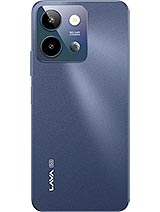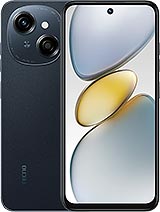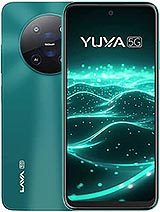Lava Yuva Star 4G alternatives
Tap above to see alternatives.
Poco X6 Pro alternatives
Tap above to see alternatives.
Lava Yuva Star 4G

Lava Yuva Star 4G
-
Unisoc SC9863A
28 nm
-
5000 mAh
10W
-
6.75"
720 x 1600 pixels
-
13 MP
1080p@30fps
- Specs
Poco X6 Pro

Poco X6 Pro
-
Dimensity 8300
4 nm
-
5000 mAh
67W
-
6.67"
1220x2712 pixels
-
64 MP
4K@24/30fps
- Specs
4x1.6 GHz Cortex-A55
4x1.2 GHz Cortex-A55
1x3.35 GHz Cortex-A715
3x3.20 GHz Cortex-A715
4x2.20 GHz Cortex-A510
12GB 256GB (UFS 4.0)
12GB 512GB (UFS 4.0)
(wide), AF
f/1.7, 25mm (wide), 1/2.0", 0.7µm, PDAF, OIS
8 MP
f/2.2, 120˚ (ultrawide)
2 MP
f/2.4, (macro)
1080p@30/60fps
f/2.4, (wide), 1/3.06", 1.0µm
SIM1: Nano, SIM2: Nano
SIM1: Nano, SIM2: Nano
14 5G bands
n1, n2, n3, n5, n7, n8, n20, n28, n38, n40, n41, n48, n77, n78
In this performance comparison, the Poco X6 Pro with its Mediatek Dimensity 8300 (4nm) performs better than the Lava Yuva Star 4G with the Unisoc Unisoc SC9863A (28nm), thanks to superior chipset efficiency.
Poco X6 Pro offers 3 years of OS updates, whereas Lava Yuva Star 4G provides 1 years. For security updates, Poco X6 Pro offers 4 years of support compared to Lava Yuva Star 4G's 2 years.
Poco X6 Pro features a superior AMOLED display, while Lava Yuva Star 4G comes with an LCD panel. In terms of smoothness, Poco X6 Pro offers a higher 120 Hz refresh rate, ensuring fluid scrolling and animations. Both devices deliver the same brightness level at nits. Notably, Poco X6 Pro offers a higher screen resolution, resulting in sharper visuals and more detailed content.
Both phones are equipped with the same 5000 mAh battery capacity. Poco X6 Pro also supports faster wired charging at 67W, compared to 10W on Lava Yuva Star 4G.
Poco X6 Pro includes an IP54 rating, while Lava Yuva Star 4G lacks an official IP rating.
¹ Scores can vary even with the same chipset due to RAM, thermals, and software optimization.










